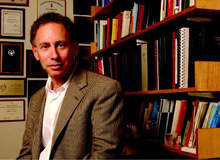
There are very few, if any, industrial sectors untouched by what has been described as the biggest global financial crisis since the 1930s. Its effects are already being felt in the field of medical research.
As healthcare providers find it harder to finance their own procurement activities, revenues for medical device manufacturers are being hit. At the same time, the squeeze on available credit is starting to have an impact on research and development expenditure in the short to mid term. But how deep will the credit crunch bite and what can the medical device industry do to help itself through these straitened times?
Dr Robert Langer is a man who has no illusions about the scale of the challenges ahead but prefers to lace his outlook with a healthy dose of optimism. The scientific pioneer and holder of the Millennium Prize for Technology, the world's largest technology award, sees real threats to medical research and development (R&D) in 2009 but believes there are already new opportunities waiting to be exploited.
Funding fears
"The immediate impact (of the current financial crisis) could be that there is reluctance on behalf of those providing the financial support for projects to provide funding for research that is seen to be more risky," says Langer.
See Also:
"I already know of some foundations reducing the amount of funding they are making available for R&D projects, likely a direct result of the current conditions. It's quite possible that we will see current projects, of course depending on where their funding is coming from, have funding pulled."
How well do you really know your competitors?
Access the most comprehensive Company Profiles on the market, powered by GlobalData. Save hours of research. Gain competitive edge.

Thank you!
Your download email will arrive shortly
Not ready to buy yet? Download a free sample
We are confident about the unique quality of our Company Profiles. However, we want you to make the most beneficial decision for your business, so we offer a free sample that you can download by submitting the below form
By GlobalDataWhen Langer met US President-elect Barack Obama back in 2006, he used his time with the then Illinois senator to raise his concerns about the reduction in federal funding for R&D projects within medicine. He warned that over the previous 15 years funding cutbacks as a result of both state and federal cost cutting had become acute.
From 1994 to 2004, funding for biomedical research in the US doubled to an estimated $94.3bn, according to a study by the Alerion Institute. Of this, 57% was secured through private ventures and 28% from national institutes, leaving just 15% coming from federal and state governments.
For some time industry watchers have argued that the mechanism to provide federal funding to small US-based device manufacturers, established in 1982, has been flawed since the "reinterpretation" of ownership requirements. The Small Business Innovation Research programme was set up to help fund the development of medical technologies.
However, as executive director of the MDMA Mark Leahey said when addressing a US House of Representative Committee in March 2008, a change to the
criteria for awards has significantly changed the landscape for public-private partnerships, consequently making it much more difficult to secure funding. As a result, promising technologies have not received the required support and not been taken any further, to the detriment of the public.
Langer's warning came at a time when the US economy was booming, when big business was getting bigger and the federal government was sharing that success through tax revenues. Today conditions are markedly different with the distinct possibility of a severe and potentially long-lasting recession. Langer is quick to point out the effects.
"I'm not an expert on the economy but it has been said that the credit crunch may well make it more difficult for research projects and medical device manufacturers," he says. "We're seeing the effect already within the medical research field and I expect there is more to come. Universities such as MIT and Harvard are making cutbacks and it is generally harder to secure venture capital for small companies. We're seeing the stock values of some of the larger companies fall."
Innovate for investment
Until recently, the void left by this lack of government funding was filled by venture capitalists prepared to take risks because they were moving in on an industry proved to be a revenue generator. But at a time when every penny counts these chances may not be seen as so attractive. This is where big businesses such as leading device manufacturers have a role to play. Langer says he would like to see them continue their collaborations with their smaller counterparts; striking deals that would help secure the future financial viability of a project and ultimately help themselves by taking a share of any resulting success.
"The keys to success in this field are the people around you, funding and a willingness to take chances and fail," he says. "For larger manufacturers many of the smaller firms can be very innovative.
“The bigger companies don't have to hire people on a full-time basis which means there is not a permanent commitment, and they won't have to lay people off if there are issues to contend with. They also get access to technology they might not otherwise have. For the smaller companies, such collaborations would and do lead to getting the much-needed funding."
Langer argues that, in this changing financial landscape, research scientists need to get creative and look beyond their normal sources of funding.
"In order for us to cope with these challenges we need to innovate and have the courage to hang in there," he says. "These conditions force us to be much more creative. There is the distinct possibility that research projects might have to look to secure more unconventional funding streams. They might have to turn more to foundations and, for example, look towards the military and the Defence Advanced Research Projects Agency (DARPA) – bodies that they otherwise might not turn to."
Recruitment issues
In his book, "The Audacity of Hope", Barack Obama explained his vision for the future of science. He said that if the US wanted to embrace an "innovation economy" then it needed to double federal funding of basic research. He argued for increased funding to train a further 100,000 engineers and scientists and for new research grant to be offered to the most outstanding early researchers.
"The total price tag for maintaining our scientific and technological edge comes out to approximately $42bn over five years," he wrote. "Real money, to be sure, but just 15% of the most recent federal highway bill." Declining support for basic research has a direct impact on the number of young people studying and going into jobs related to maths, science and engineering.
In recent years there has been what many see as a "brain drain" across most scientific disciplines. Governments, business and academia are slowly waking up to the fact that new talent is needed in this area. Langer says that while this has not been a major issue in the past, it is slowly becoming a concern. It is, he admits, perhaps partly the result of the complex nature of such technical work. However, there are many other reasons why it is becoming more difficult for science to
portray itself as something to be involved with. It has little to do with the good work being done by academia and business to bring in new minds.
"Overall there is a reasonable balance between the work being done by academia and business," Langer explains. "But for many years the media has popularised actors, singers and sports stars far more than scientists, despite the fact that they really do have a significant role to play."
He also believes that more could be done by the profession, arguing that, like him, greater numbers of people involved in science and engineering should be working at the grassroots with budding new scientists.
"We should work more closely with high and grammar schools and their students, delivering lectures and offering more practical experience such as lab work if we want to make a mark early on," he adds.
The future of medicine
The application of molecular biology to medicine, which ultimately led to genetic engineering is, as Langer says, is one of the biggest discoveries ever made in the time he has been a scientist. But there is much more to come. "Ultimately this discovery will change both diagnostics and therapeutics," he argues. "We will know everything about the genome and will be able to diagnose abnormalities and devise ways to treat them." He believes there are many more discoveries of
this magnitude still to be made.
"I hope and believe that the development of engineered tissues will be one of them. I would like to think this will be revolutionary, potentially leading to new livers, pancreas, bones, spinal cords and so on for patients that are in such great need. However, there are some considerable barriers that we need to overcome, such as the altering of cells and encapsulating them in biocompatible materials."
Despite an already extensive scientific career, Langer still has much he wants to achieve. "I am always looking to come up with more ideas, bring more of our older ideas into the clinic and train the best bioengineers in the world," he explains. "But if my career ended today, I’d have no regrets. I feel very fortunate."
A new hope?
In this uncertain world, Langer believes the election of the next US president undoubtedly offers new hope for the future of medical research.
"The potential challenges are many and varied," he says. "They include a need for better research, greater funding and a revolutionised healthcare system. Although Obama's election doesn't necessarily herald a new dawn he, I think, understands the need for medical research better than most.
“The difference that I noted with him during our meeting was that many people bring up the burning political issue of stem cell research when discussing this type of work, but he
went much further than that.
“He recognises the importance of the work being done by lots of people, not just that on stem cells."
Langer expressed his hope that the economic situation will not affect the president-elect's vision for medical research: "Obama has made it plain that this work is a priority for him. My hope is that while people have to make tough choices at hard times, he continues to recognise the importance of what we are doing. He's a smart guy."
Langer concludes that the medical devices field does ultimately have a bright future that he wants more young talent to be involved in. Speaking out to the future generation of scientific engineers, he said: "Don't get discouraged if there are lots of things you don't know or if scientific obstacles seem insurmountable. Dream big dreams, be willing to take chances and do your best to fulfil those dreams."




